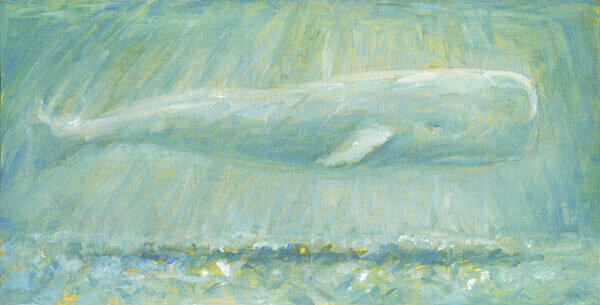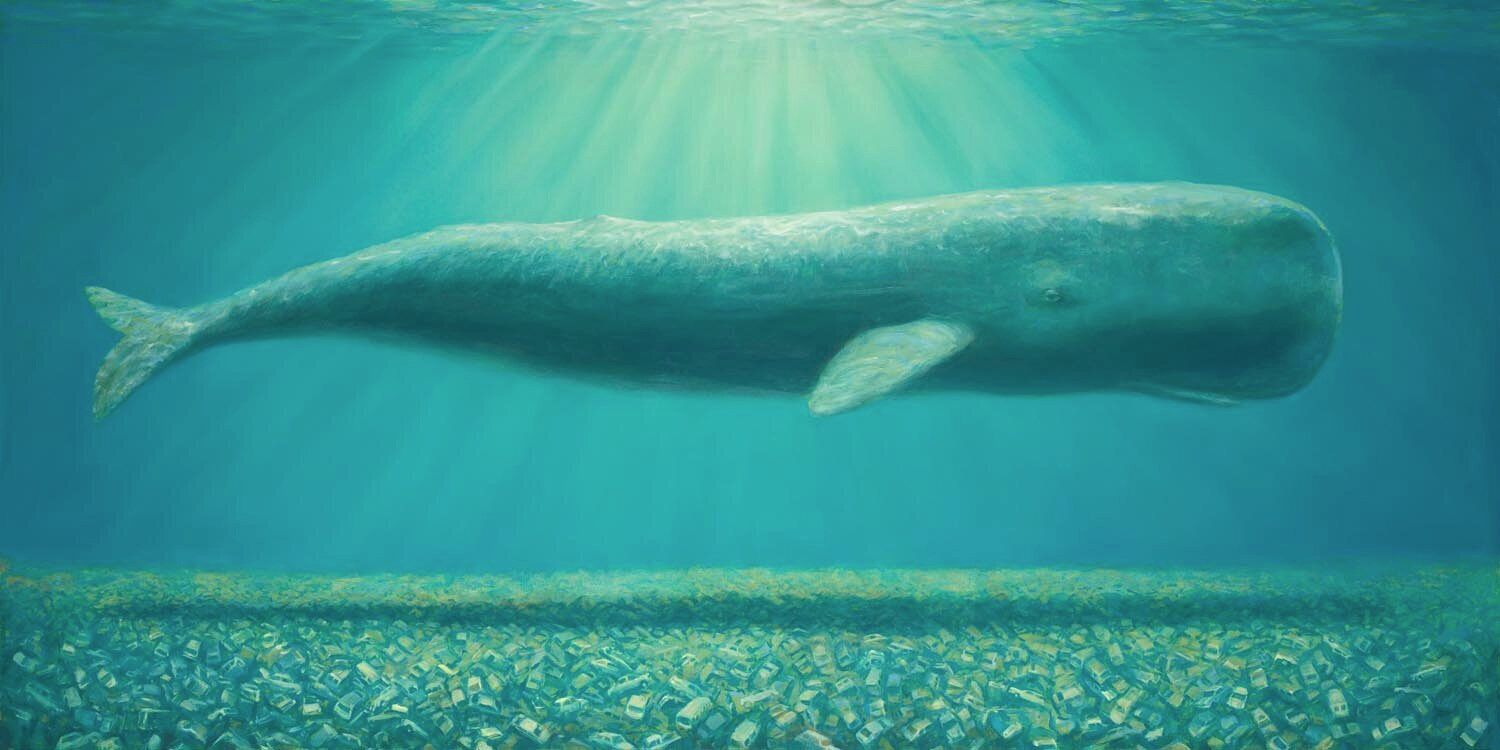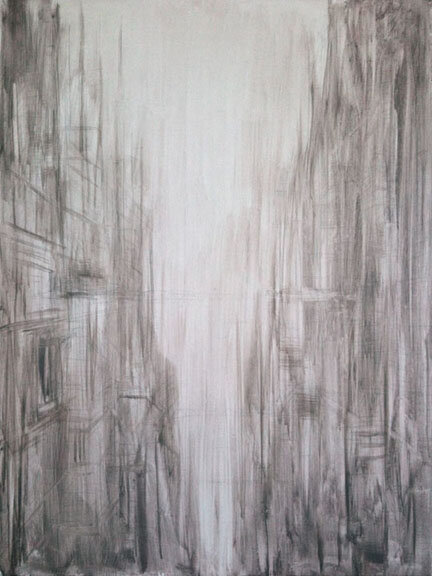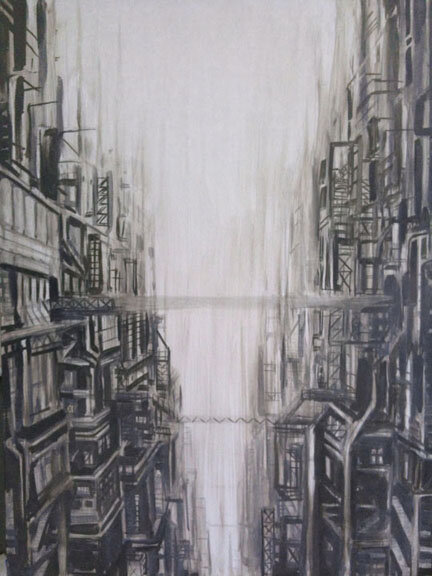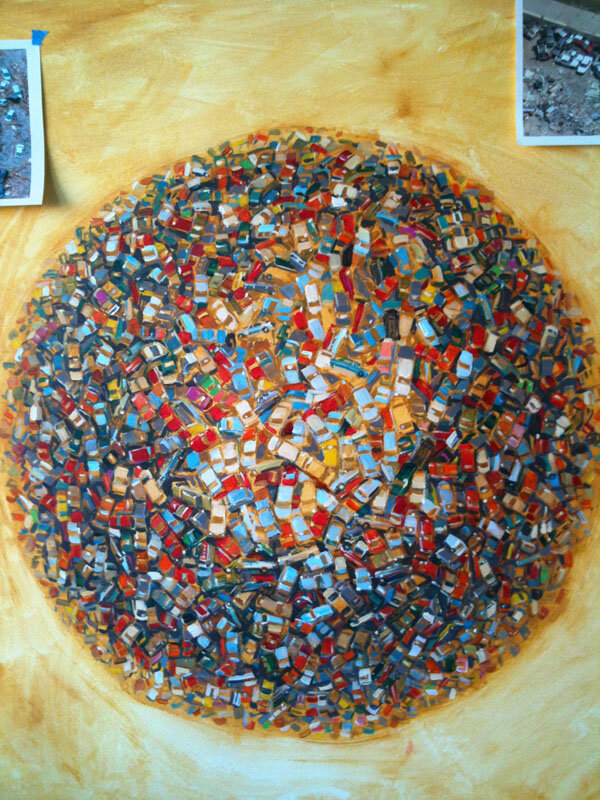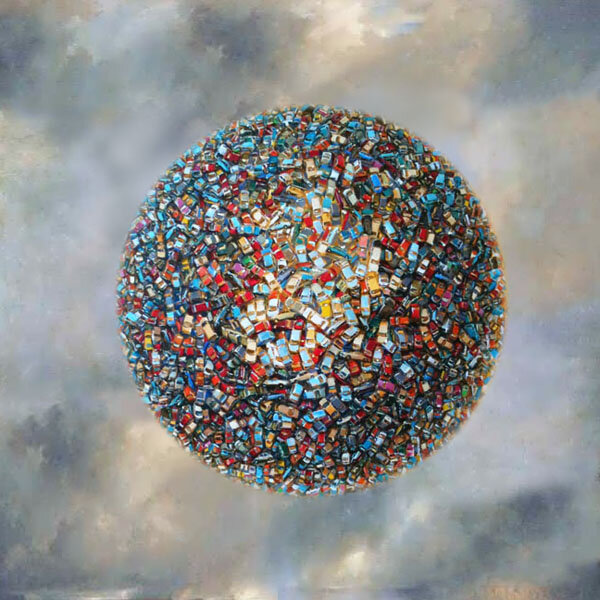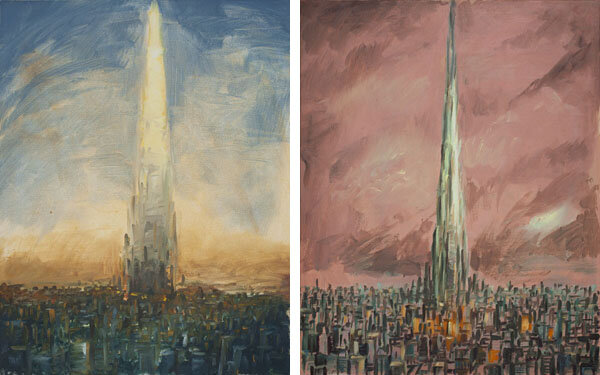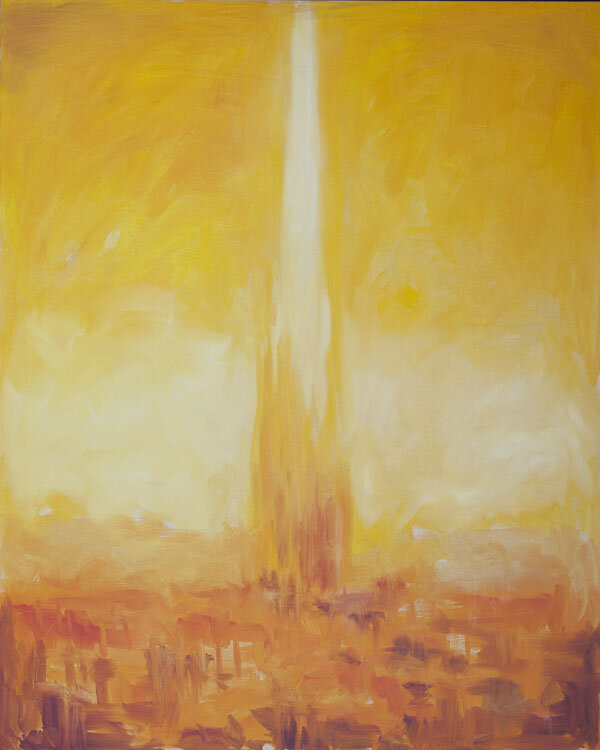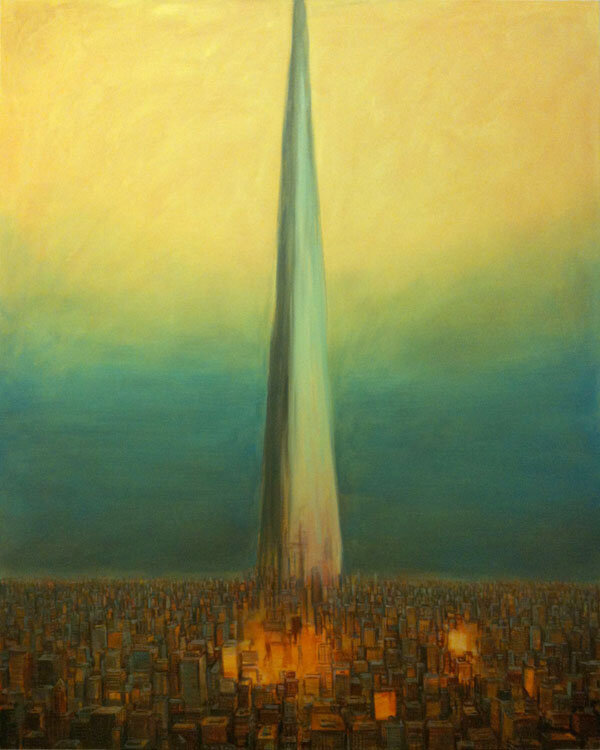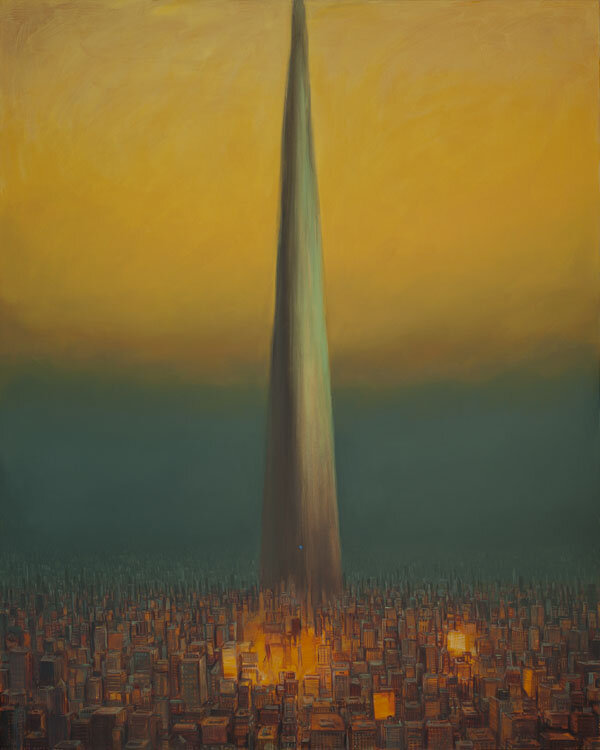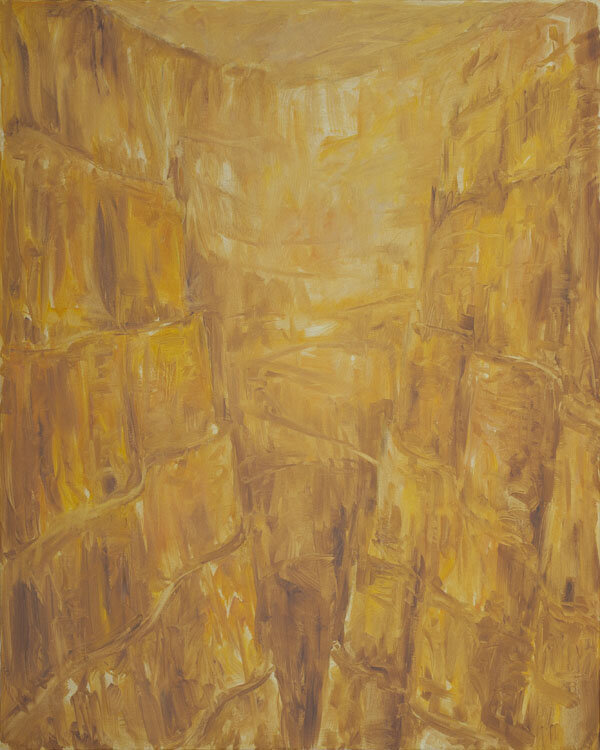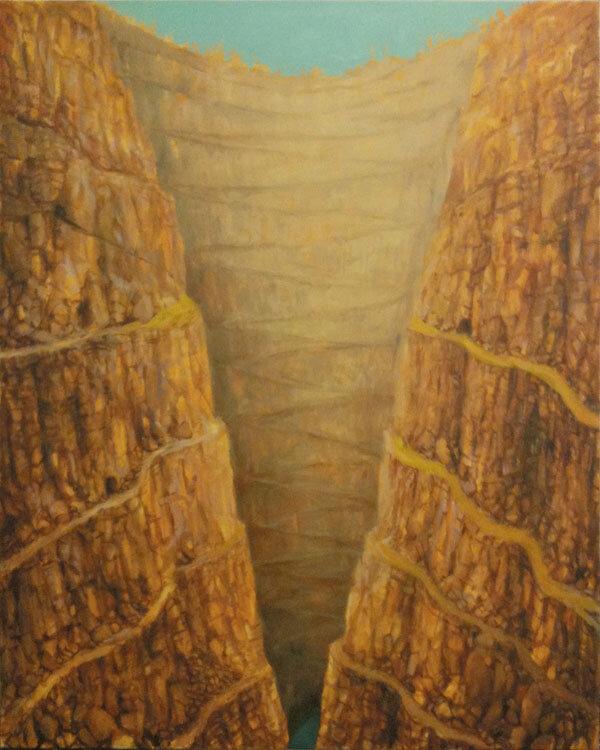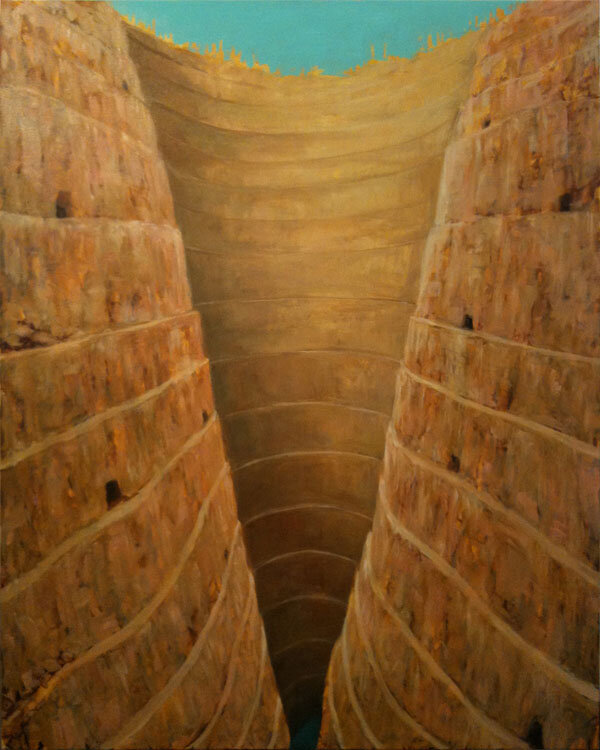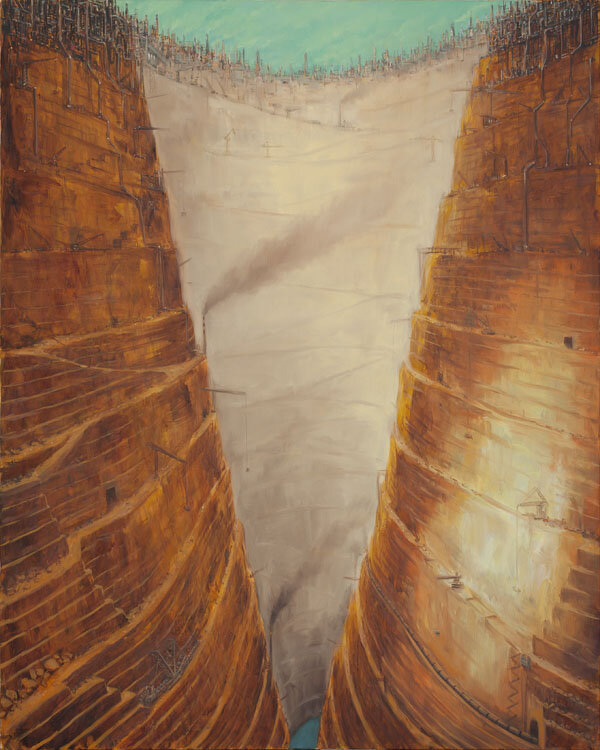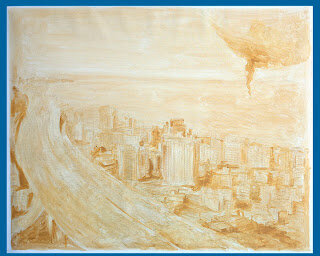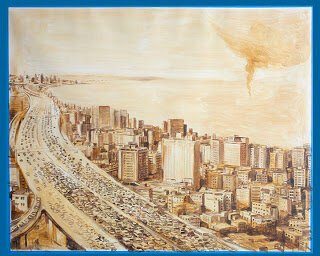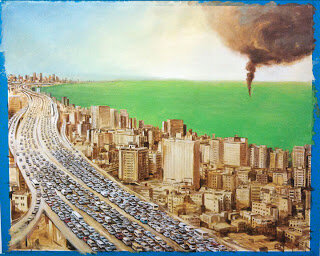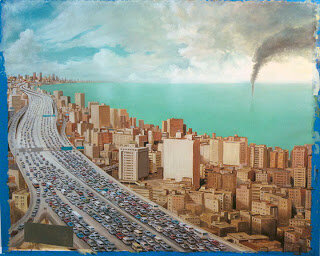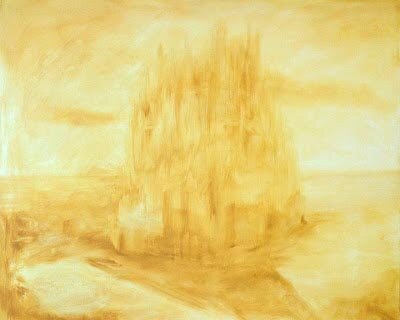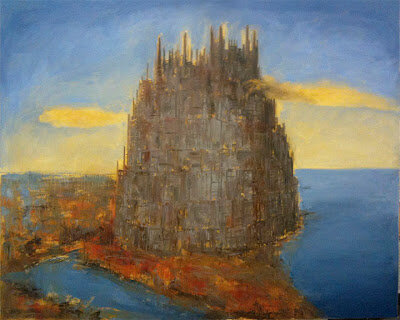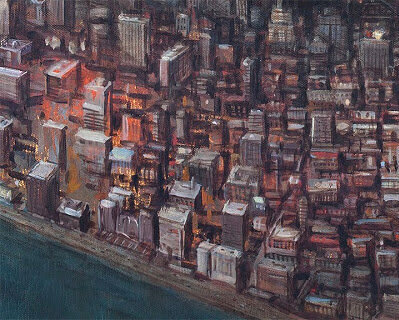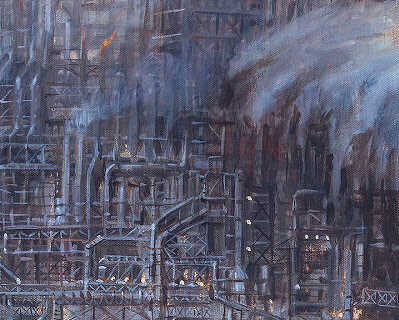You never know where an idea for a painting will come from, but I get them all the time. One resource I use for inspiration is combing through my art books. When flipping randomly through a catalog or monograph of a particular artist, I sometimes encounter an image that sparks an idea for a new painting.
Below is a work by the 19thC. painter Frederic Edwin Church, titled The Vale of St. Thomas, Jamaica, dated 1867. This painting depicts a rainstorm passing over a lush tropical river valley. I love the magical quality of the light captured by Church.
While studying this image, I had an idea to reinterpret Church’s painting through my creative lens, and paint an allegory about the negative consequences of modern capitalism. Instead of rolling hills of lush tropical vegetation, I would show massive piles of cars and other consumer goods. The river would be replaced by a freeway full of traffic, and the palm trees would become billboards imploring to buy more.
I chose to start with a violet color for my under-painting. I did this because I felt it would compliment the colors I would add later, and this would hopefully make the painting more vibrant.
I steadily added more colors and details. I also made minor modifications to my composition. For example, I didn’t like the original size of the billboard in the lower right corner, so I repainted it larger, and gave it a bit more foreshortening.
The advertisements on my billboards borrowed the branding of companies like Walmart, IKEA, and Home Depot. These recognizable logos now had words like “BUY”, “MORE”, and “STUFF”. Seen repeatedly across the landscape, these imperative words felt like a mantra of consumerism. I liked this idea so much that it has become part of my visual vocabulary. A number of my recent paintings have included billboards with the word “MORE”. It seems apropos to my critique on capitalism.
Owing to the dark mood of this painting, I decided to call it The Vale of Sorrows, mirroring the title of Church’s The Vale of St. Thomas. Although I hadn’t matched the skill level of Church, I was fairly happy with my painting. Maybe someday I’ll be able to develop my painting ability to a level where I could consider myself an equal to Church. I can only dream.





